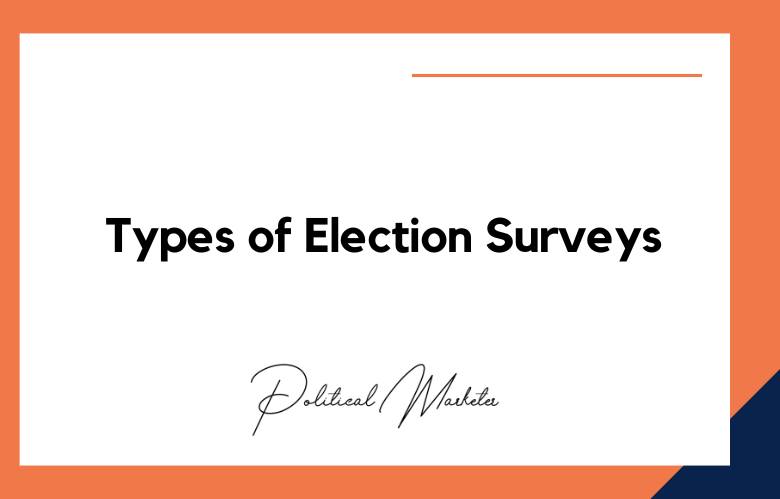Building a strong brand is essential for political leaders in today’s highly competitive political landscape. A great brand can help leaders establish credibility, gain support from voters, and create an emotional connection with people. A brand is the visual and dynamic representation of a political leader, and it communicates who the leader is, what they stand for, and what they can do for people.
But building a strong brand is not easy; it requires careful planning, coordination, and execution. We will discuss some critical strategies for crafting a compelling brand for political leaders and explore examples of successful brand-building in politics.
Crafting a Compelling Brand for Political Leaders
Define your values and message.
The first step in building a solid brand for a political leader is to define their values and message. The values are the guiding principles that the leader stands for, and the message is the communication of those values to people.
Political leaders need to understand what values they stand for, what their goals are, and how they want to communicate with people. The message should be clear, concise, and consistent across all platforms. It is important to remember that people want to vote for a leader who stands for something and believes in their values.
Develop a visual identity.
The next step is to develop a visual identity that represents the brand. A visual identity includes the logo, color palette, typography, imagery, and other design elements that create a consistent look and feel across all platforms. The visual identity should be memorable and unique and reflect the political leader’s personality. It should also be flexible enough to adapt to different contexts and platforms.
Leverage social media
Social media has become a powerful tool in political branding, and political leaders must leverage it effectively. It is essential to be present on all major social media platforms, including Facebook, Twitter, Instagram, and LinkedIn.
Each platform has unique strengths and audiences, and the content should be tailored accordingly. Social media can be used to share the message, engage with voters, and create a sense of community. Political leaders should also be responsive to comments and feedback on social media.
Build a compelling website.
A website is a critical component of political branding, and it should be well-designed, informative, and engaging. The website should include the leader’s bio, platform, and critical issues. It should also feature photos, videos, and other multimedia content that helps people connect with the leader. The website should be easy to navigate, mobile-friendly, and optimized for search engines. Political leaders should also consider a newsletter to provide regular updates and insights to people.
Be authentic and consistent.
The most crucial aspect of political branding is authenticity. Political leaders must be true to their values, message, and personality. People can sense that if a leader is not genuine, it can damage the brand. Consistency is also essential, and all communications and actions should be aligned with the values and message of the brand. Political leaders should also be open and transparent about their views, positions, and actions.
Mastering the Art of Political Branding: Strategies for Success
Define Your Brand
The first step in mastering political branding is to define your brand clearly. This includes identifying your values, beliefs, and critical messages you want to convey to voters. Your brand should be authentic and resonate with your target audience.
Know Your Audience
For your branding efforts to be successful, you must understand your audience. This includes their demographics, interests, and concerns. You can create a stronger connection with them by tailoring your message to appeal to your audience’s needs and wants.
Consistency is Key
Consistency is crucial when it comes to political branding. This means using the same colors, fonts, and messaging across all platforms – from social media to campaign materials – to build recognition and trust with voters.
Utilize Social Media
Social media has become a powerful tool for political branding. It allows candidates to connect directly with voters and share their messages in real-time. Platforms such as Twitter, Facebook, and Instagram can also help reach younger voters who are more likely to engage with political content online.
Tell Your Story
People connect with stories on an emotional level, so use storytelling techniques in your branding efforts. Share personal anecdotes or experiences that showcase your values and beliefs in a relatable way.
Differentiate Yourself
In a crowded political landscape, it’s essential to differentiate yourself from other candidates. Identify what differentiates you from the competition and highlight those qualities in your branding strategy.
Be Memorable
Effective political branding requires being memorable. Use catchy slogans or taglines that stick in people’s minds and make them think of you when they head to the polls.
Monitor Your Image
Your image as a candidate is constantly being scrutinized by the media and voters alike. Stay on top of how you are perceived by regularly monitoring news coverage and social media conversations about you.
Stay Authentic
In the age of social media, it’s easy for politicians to come across as inauthentic. Avoid this by staying true to your brand and values, even when faced with criticism or pressure to conform.
Adapt and Evolve
As political landscapes and voter preferences change, so should your branding strategy. Be open to adapting and evolving your brand to stay relevant and connect with voters meaningfully.
Crafting a Compelling Brand: The Key to Politics
In today’s political climate, crafting a compelling brand is becoming increasingly important. A powerful brand can help politicians distinguish themselves from competitors and emotionally connect with voters. It can also aid in building trust, credibility, and, ultimately, winning an election.
When branding in politics, the key is to focus on what makes a candidate unique and relatable. This could be their personal story, core values, or policy positions. By highlighting these key characteristics and compellingly presenting them, a candidate can build a brand that resonates with voters and creates a strong sense of identity.
The Power of Perception: Building a Strong Political Brand
Political branding has become a crucial factor in gaining political success in today’s world. How politicians brand themselves can make or break their political careers.
Political branding encompasses many factors, such as public perception, rhetoric, body language, fashion, and social media presence. In essence, political branding creates a unique image and messaging that resonates with voters and helps politicians stand out from their competitors.
The power of perception is a crucial component of political branding. How the public perceives a politician is critical to their success. Therefore, politicians must manage their public image effectively, as it can significantly impact their ability to win elections.
In fact, a study conducted by the American Political Science Review found that voter perceptions of politicians strongly influenced their voting decisions, even more so than their political platform.
Unleashing Your Political Persona: The Art of Branding
In today’s fast-paced world, political branding has become essential for politicians to gain recognition, attract supporters, and secure election success. As such, unleashing your political persona is critical to standing out in a crowded marketplace of politics. Branding is not just about creating a slogan or logo; it’s about creating an authentic, powerful, and distinctive identity that resonates with voters.
A political persona is a set of characteristics, values, and ideas that define you as a politician. It is created carefully considering your beliefs, goals, and policy positions. Your political persona should communicate your vision for the future, your understanding of the issues, and your ability to lead and deliver results.
Conclusion:
Building a compelling brand for political leaders requires much effort, creativity, and skill, but it can be a game-changer in modern politics. A great brand can attract supporters, open doors to opportunities, and inspire people to action.
By defining their values and message, developing a visual identity, leveraging social media, building a compelling website, and being authentic and consistent, political leaders can create a brand that resonates with people and helps them achieve their goals. In the end, a strong brand is not just a visual representation of a leader but a powerful tool for building trust, credibility, and influence in today’s complex political landscape.
Crafting a Compelling Brand for Political Leaders: FAQs
What Is The Importance Of Building A Brand For Political Leaders?
A strong brand helps political leaders establish credibility, connect emotionally with voters, and differentiate themselves from opponents.
How Do Political Leaders Define Their Core Values And Message?
They begin by clearly identifying their guiding principles and crafting a message that consistently communicates those values to the electorate.
Why Is Consistency Important Across Platforms?
Consistency in message, visuals, and tone reinforces recognition, trust, and alignment between what leaders say and how they present themselves.
What Role Does Visual Identity Play In Political Branding?
Visual elements—such as logo, colors, typography, and imagery—create a memorable and flexible brand identity that reflects a leader’s personality.
How Should Political Leaders Leverage Social Media?
By maintaining active presence on platforms like Facebook, Twitter, Instagram, and LinkedIn—sharing tailored content, engaging with followers, and responding to feedback.
What Makes A Website Essential For Political Branding?
Websites serve as centralized hubs featuring a leader’s bio, key issues, multimedia, and updates—helping inform, engage, and convert supporters.
Why Is Authenticity Critical For A Political Brand?
Voters perceive genuine values; authenticity builds trust and shields the brand from appearing inauthentic or opportunistic.
How Do Leaders Ensure Their Brand Remains Authentic?
By aligning all communications and actions with their defined values and being open and transparent about positions and intentions.
How Does Understanding The Audience Improve Branding?
By knowing demographics, concerns, and interests, leaders can tailor messaging and visuals to resonate more deeply with voters.
Why Does Storytelling Matter In Political Branding?
Personal anecdotes and relatable stories create emotional connections that reinforce values and motivate voter support.
How Can Political Leaders Differentiate Themselves?
By identifying what makes them unique compared to competitors—such as personal history, policy focus, or style—and showcasing that in the brand.
What Is The Significance Of Catchy Slogans Or Taglines?
Memorable phrases help keep a candidate top-of-mind during campaigns and strengthen brand recall.
How Should Political Leaders Monitor Their Brand Perception?
By tracking media coverage, social media sentiment, and public reactions to adjust messaging and strategies proactively.
Why Is Adaptability Necessary In Political Branding?
As political climates, technologies, and voter priorities change, brands must evolve while staying true to their core values.
How Should Leaders Handle Negative Scrutiny?
Authenticity and consistency help maintain trust; transparent responses to criticism can reinforce integrity.
What Elements Define A Political “Persona”?
A combination of values, vision, style, communication habits, and beliefs that expresses who a leader is and what they stand for.
How Do Visuals And Rhetoric Shape Public Perception?
Elements like body language, attire, and choice of words contribute as much to brand image as policies and positions.
Why Include Multimedia Content On Websites?
Photos and videos help humanize the candidate, deepen voter connection, and illustrate values in action.
How Can Leaders Build Community Through Their Brand?
By using social platforms, newsletters, events, and responsive dialogue to foster belonging and engagement among followers.
What Is The Long-Term Value Of A Compelling Political Brand?
A compelling, trustworthy brand builds enduring credibility, increases voter loyalty, and supports sustained political success.
Call: +91 9848321284
Email: [email protected]










